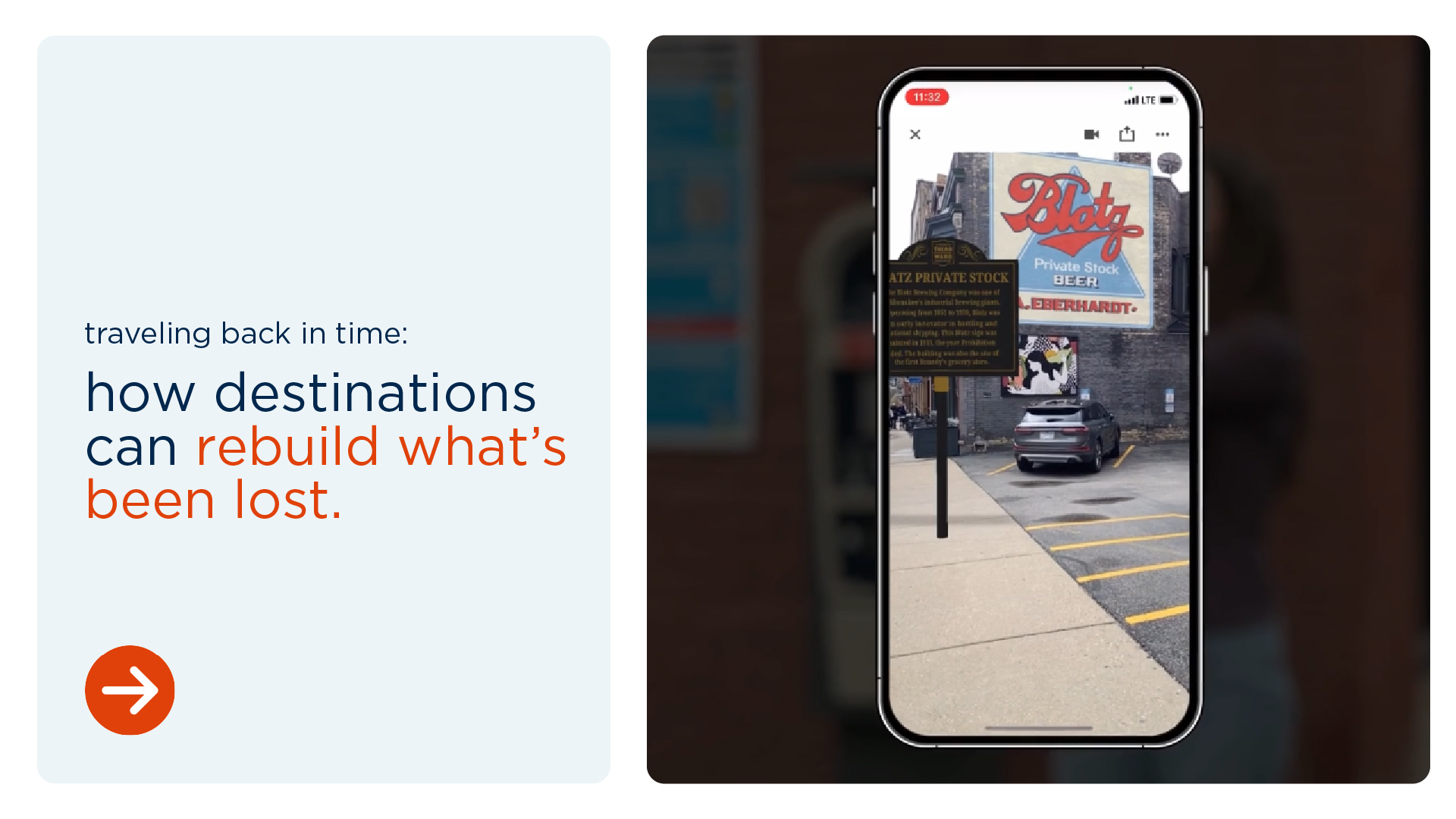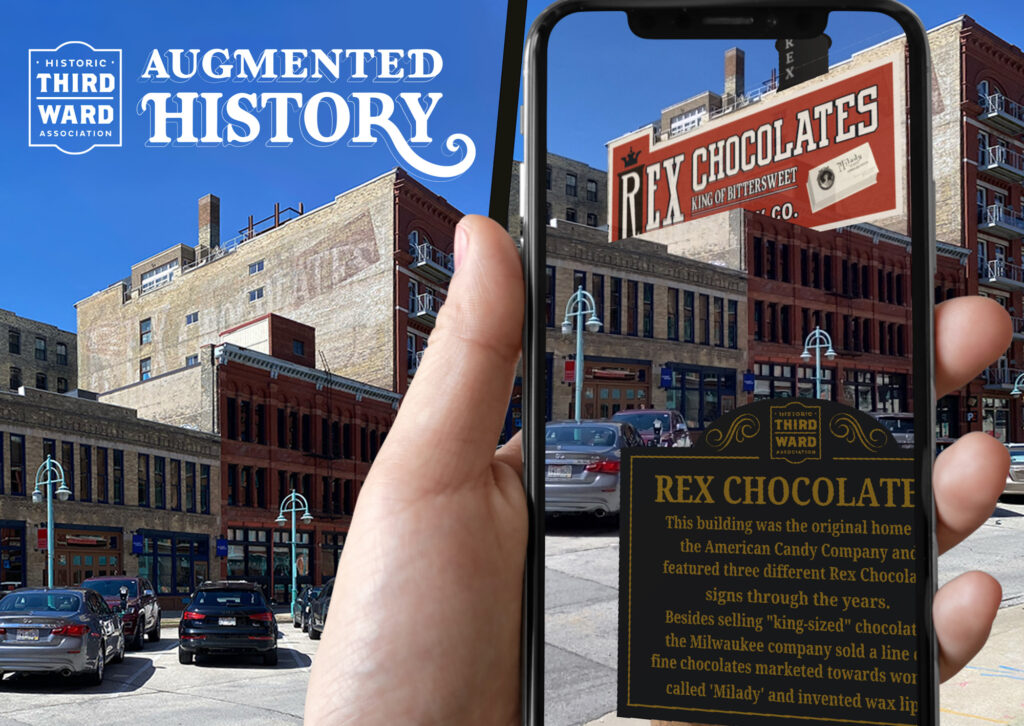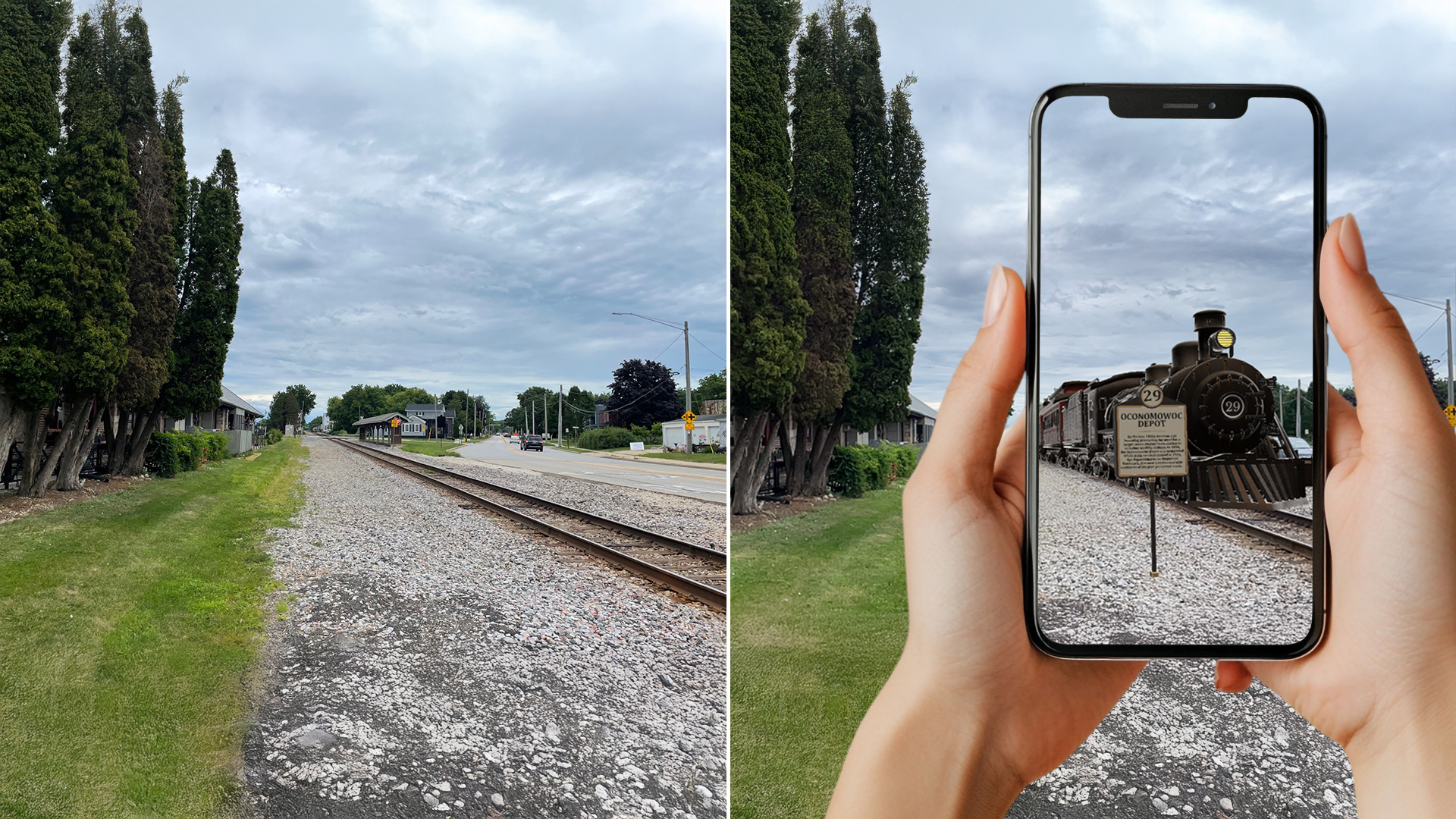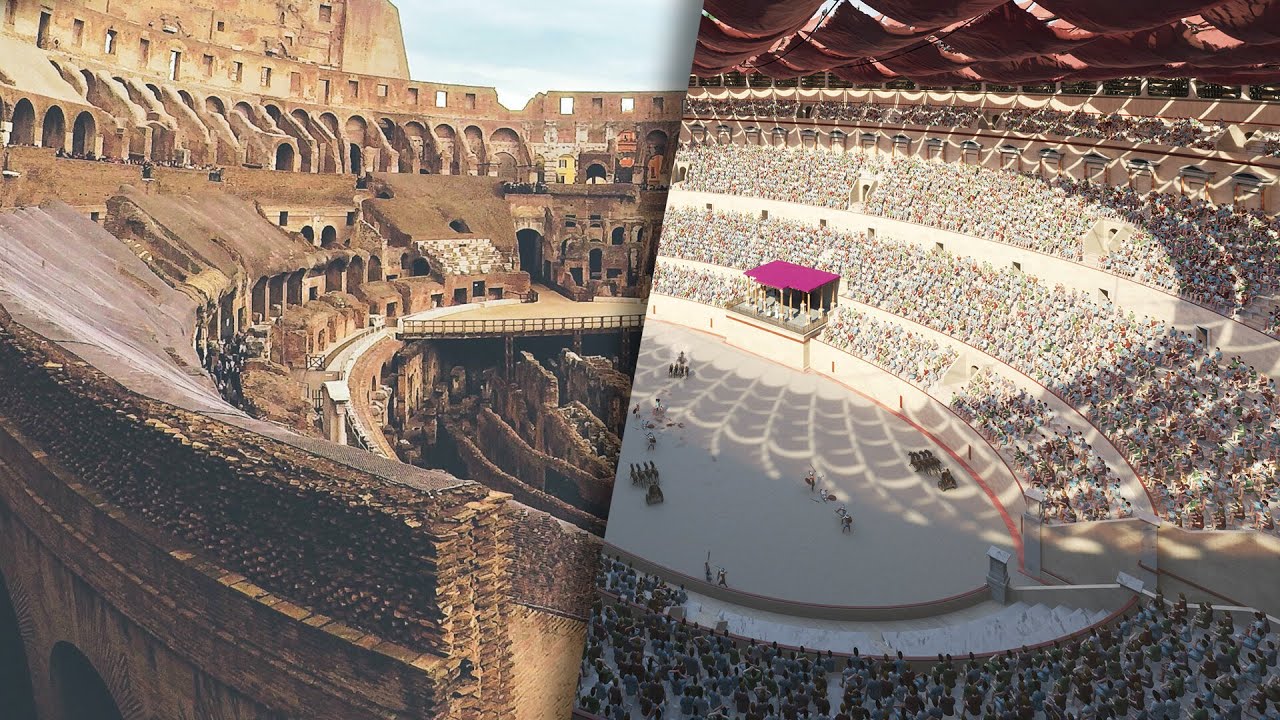Traveling Back in Time: How Destinations Can Rebuild What’s Been Lost
July 29, 2025
Many destinations are rich in history, but the visual evidence of that history has faded—or disappeared altogether. Landmarks, signs and spaces that once defined a place are now memories. With augmented reality (AR), those memories can be brought back to life—layered onto present-day locations to create immersive, emotional and highly shareable experiences. This is the power of using augmented reality in tourism: combining digital storytelling with physical space to help visitors not just learn about a place but feel its story.
At Hoffman York, we use this approach to help destinations create meaningful connections, drive exploration and add lasting cultural value. How? Step inside and we’ll show you.
Ghosts of Milwaukee’s Past
Once a warehouse district, Milwaukee’s Third Ward has transformed into an epicenter, with condos, restaurants, boutiques, businesses and more. But the area’s old historic buildings tell a story of the past—specifically the ghost signs that remain. Rather than let them fade away, we decided to restore them using augmented reality.
Our team explored historical archives to learn what these beautiful, yet nearly unrecognizable ads looked like in their heyday. We then digitally recreated them in full color and geo placed them onto the buildings for people to see as they once appeared—by simply holding up their phones.
The augmented reality tour, Augmented History, features 14 stops. Each includes a digital historic marker that tells its story. Not only did this effort renew people’s interest in the past, but it generated significant media coverage and social media buzz, helping to drive increased tourism to the area.

History Comes Alive in Lake Country
Oconomowoc, Wis., is known for its lakes. Its rich history is part of what draws visitors each summer. In the late 1800s, wealthy travelers, and even multiple presidents, came via train to experience this “Newport of the West.” They stayed in luxurious hotels and built beautiful homes on these lakes. Oconomowoc became so famous that in 1939, its Strand Theater was chosen for the world premier showing of The Wizard of Oz. However, many of these legendary landmarks have disappeared, only black and white photos remain.
Fortunately, we were able to restore this history using augmented reality. In partnership with the Oconomowoc Historical Society, we carefully studied the stories and photos of these places to ensure every structure was recreated with accuracy and respect.
Now, those taking the historic walking tour can simply point their phones to watch iconic buildings in vacant spaces reappear before their eyes, a late-century train arriving at the once-bustling train station and an old mailboat bobbing in the water—with all the intricate details that made them a sight to see years ago. In addition, each of the 29 tour stops features virtual historic markers that tell their tales.


It’s a Growing Market
The mobile AR market is estimated to increase from $21 billion to $36 billion by next year (source). This growth is why more destinations are finding new and creative ways to use AR to share their history with visitors.
- From Streets to Exhibits: Museums are one of the many sought-after stops for travelers. AR doesn’t replace artifacts—it enhances them, turning static displays into immersive stories. The Smithsonian National Museum of Natural History was one of the first to do this. Instead of simply observing the bones of a fully reassembled T-Rex, visitors can observe actual dinosaurs in full color and scale, in a lush forest complete with sound. Adding AR to a static exhibit not only adds appeal but connects with younger, more tech-savvy travelers—especially Millennials and Gen Z, who are taking more trips per year than any other generation (source).
- Reliving the Moments That Made Us: If we can bring back historical structures, why not reconstruct and reenact famous historical events? That’s what some destinations are now doing. This takes AR to a whole new level, as it combines objects, people and movement, providing a glimpse of what life was like at an exact time in that exact space. In Rome, for instance, visitors to the Colosseum can now use their phone to view what it would have looked like inside nearly 2,000 years ago—80,000 spectators and gladiators fighting for their lives. The same thing is happening in Gettysburg, PA, where visitors can experience a battlefield filled with soldiers and President Lincoln giving his Gettysburg address.

Looking Back to Move Forward
As tourism evolves, so do the expectations of the people it serves. AR offers destinations a way to not just tell their story, but to show it—layered, dimensional and alive. At Hoffman York, we believe great storytelling starts with context. And creating experiences that allow destinations to preserve the history that made them what they are today. History that travelers want to see and feel.
If your city or district is ready to bring its history to life in new ways, let’s talk.



